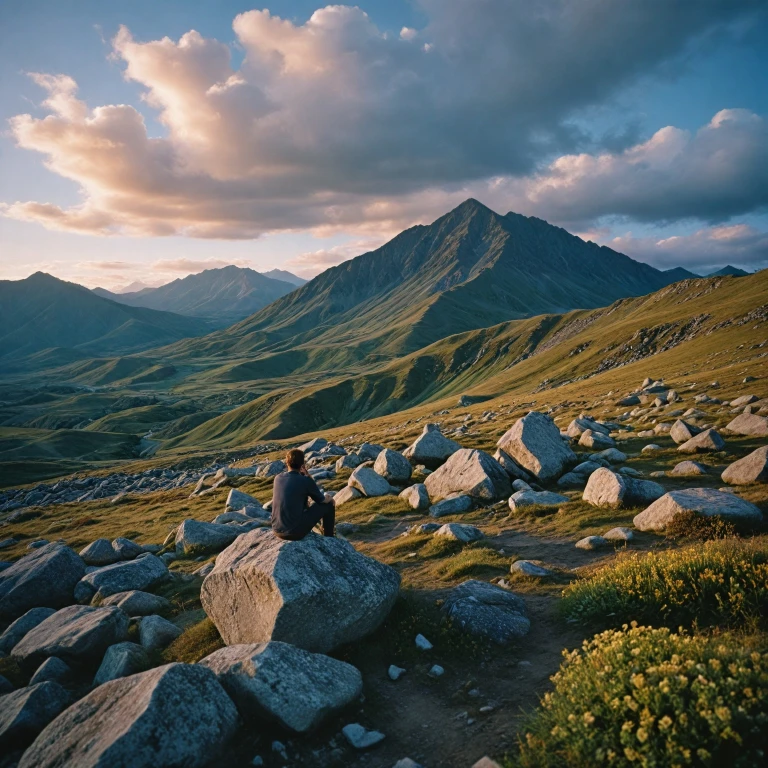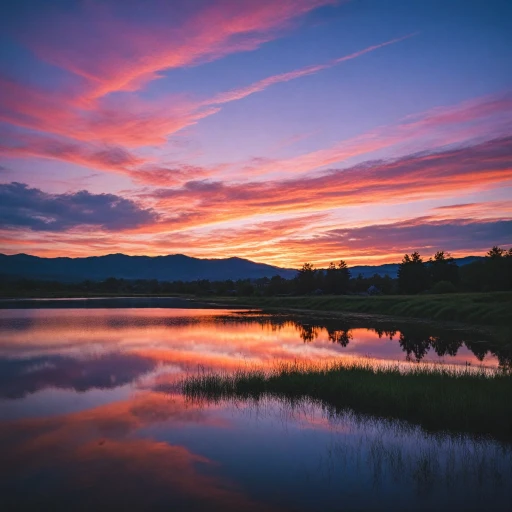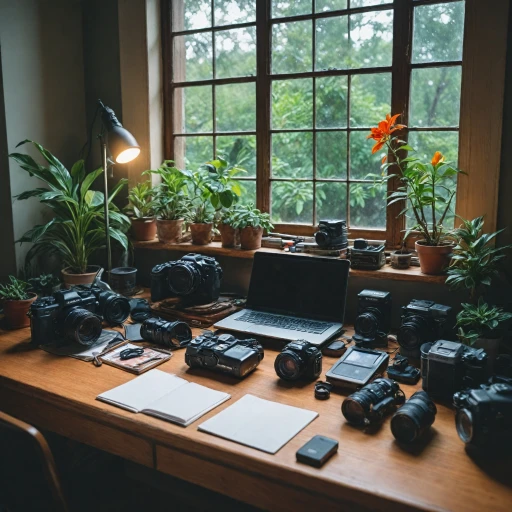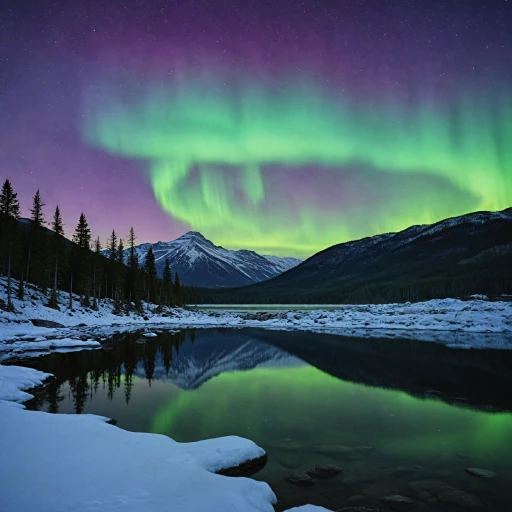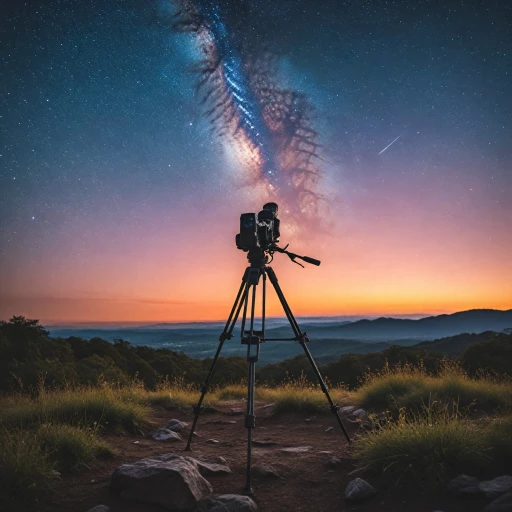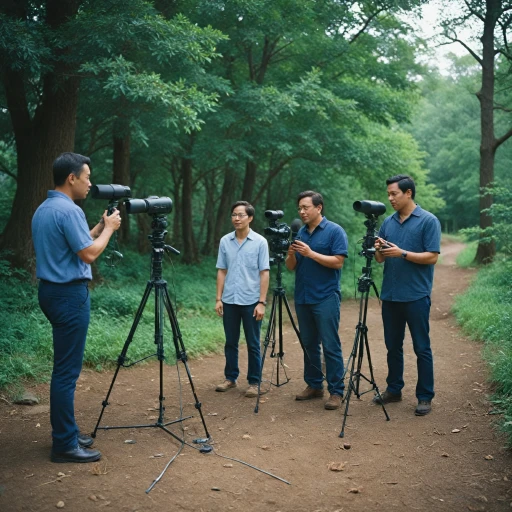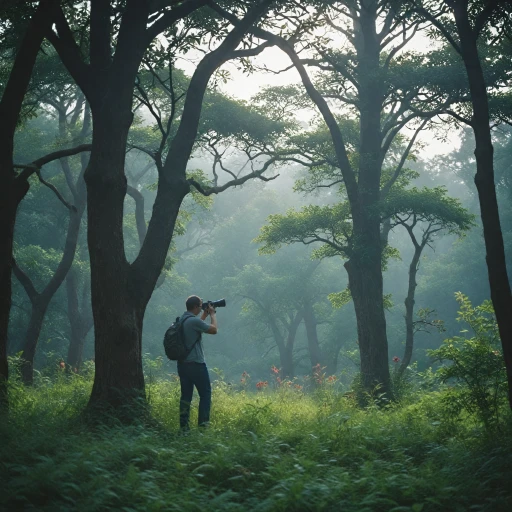
What is Camera Tilt?
Understanding How Camera Tilt Functions
In digital photography, the concept of camera tilt refers to the intentional angling of the camera body or lens along a horizontal or vertical axis. This adjustment can change the perspective from which an image is captured, introducing elements that add dynamic tension or highlight distinct aspects of the subject. Whether it's a subtle shift to emphasize a foreground element, or a dramatic tilt for a car chase scene, understanding the basic mechanics of this movement is essential. Adapting the angle of the camera can influence how objects within the frame relate to one another spatially. This is often used to bring creative flare into your shots, while simultaneously enriching the overall image quality. Combined with a well-thought-out camera system, this approach can bring an engaging focus to your photography. It's not just about the "tilt" — it's also how you integrate it with the movements and the type of model or camera you're using. For those utilizing professional equipment like a camera rig or hydra arm, tilting becomes even more critical. These systems allow for precise control over the camera's position and angle, offering unparalleled opportunities to craft the perfect shot. Whether you are capturing video or still imagery, such control can be the differentiator in delivering high-quality content. For instance, when working with specialized lenses such as the tilt-shift, photographers can further manipulate the plane of focus to achieve controlled perspective adjustments. If you are considering investing in choosing the ideal lenses for stunning landscape photography, it's worth understanding how these lenses can augment the traditional uses of camera tilt.The Role of Camera Tilt in Composition
The Impact of Camera Tilt on Visual Storytelling
Camera tilt plays a pivotal role in enhancing the composition of your shots, whether you're capturing still images or shooting video. By adjusting the angle of your camera, you can dramatically alter the perspective and focus of your shot, adding depth and interest to your visual narrative.
When you tilt your camera, you introduce a dynamic element that can transform a mundane scene into something visually compelling. This technique is particularly effective in car chase scenes, where the tilt can convey speed and urgency. Similarly, in landscape photography, a slight tilt can emphasize the vastness of a view or highlight specific elements within the frame.
For those interested in architectural photography, camera tilt is essential for correcting perspective distortions. By adjusting the tilt, you can ensure that vertical lines remain parallel, which is crucial for maintaining image quality and achieving a professional look. This is where tilt-shift lenses come into play, allowing photographers to control the plane of focus and achieve precise compositions.
Incorporating camera tilt into your photography requires a good understanding of your camera system and its capabilities. Whether you're using a DSLR, mirrorless model, or even a car camera setup, knowing how to manipulate the tilt will enhance your creative control. For those looking to explore this technique further, consider investing in a camera rig or mount that allows for smooth and precise movements.
To truly master the art of camera tilt, practice is key. Experiment with different angles and settings to see how they affect your shots. As you become more comfortable with this technique, you'll find that it opens up new possibilities for creative expression. For more tips on enhancing your photography skills, check out our guide on choosing the right graduated ND filter for stunning sunset photography.
Technical Aspects of Camera Tilt
Understanding the Technical Nuances of Camera Tilt
When diving into the technicalities of camera tilt, it's essential to comprehend how this movement can dramatically transform the visual impact of your photography and videography. Camera tilt, as it relates to shot composition, involves adjusting the camera angle in relation to the subject within the frame. The effectiveness of this technique hinges on multiple factors, including the type of camera system or model being used, as well as the specific shot objectives. Modern digital cameras, including chase cams, hydra arms, and camera rigs, are equipped with advanced tilt mechanisms that allow for precise control over movements. This precision is a hallmark of quality camera systems, which provide filmmakers and photographers with the flexibility to capture dynamic shots, such as car chases or overhead views. With options ranging from manual tilt adjustments to automated tilt functions found in certain camera mounts, selecting the correct system for your needs is paramount. Incorporating camera tilt into your work requires a familiarity with lens configurations. For instance, tilt-shift lenses offer unique capabilities like focal plane adjustments that can enhance image quality. When utilized correctly, these lenses can separate your subject from the background, or introduce stunning effects that guide the viewer's focus to specific areas of the scene. Such technical aspects will enhance your understanding and manipulation of the camera's field of view, adding depth and context to your shots. While camera tilt is a powerful tool in a creative's arsenal, it can also present challenges. For those new to this technique, balancing tilt with other camera movements, such as pans and zooms, can prove tricky without experience or a sophisticated setup. Investing time in understanding your camera and lens setup will pay dividends in mastering this technique. For those searching for more insights on camera setups for landscape photography, which often incorporates tilt techniques, you might find this choosing the ideal lenses for stunning landscape photography guide particularly beneficial. By maximizing your equipment's potential, you will enhance your ability to capture captivating and technically sound visuals.Creative Uses of Camera Tilt
Discovering Creative Outcomes Through Camera Tilt
Camera tilt has increasingly become a favorite tool among photographers to inject creativity into their shots, providing unique angles and perspectives that go beyond conventional photography. This technique, while reliant on a camera's tilt capability, opens doors to various creative possibilities that elevate image quality. One creative application is incorporating tilt to emulate a tilt-shift effect. This might remind you of a miniature world – a stunning perspective achieved by properly setting your camera’s tilt. With particular models equipped with the right tilt mechanism, this effect can dramatically change how subjects such as buildings or cars are perceived in photos, providing a fascinating focus. Another innovative use of camera tilt is in motion shots, such as car chase scenes. A chase cam setup often involves a camera mounted on an adjustable arm, like a hydra arm mini, allowing dynamic tilts during movement. This creates engaging visuals that enhance the narrative of videos, especially those requiring intense motion depiction. Photographers also employ tilt when capturing overhead shots or aerial views, enhancing the composition by altering the camera’s point of view. Similarly, this technique can be a strategic move to guide the viewer's attention within a scene, emphasizing certain elements while maintaining harmony with the overall shot. Moreover, for videographers exploring security camera systems or car camera setups, tilt becomes invaluable. With a flexible camera system offering tilt adjustments, you can cover broader angles, ensuring comprehensive footage capture. This ability is particularly beneficial for overhead camera arrangements or when integrating a tilt capability in a camera car rig for smoother and more controlled shifts. Mastering camera tilt indeed opens up a myriad of creative opportunities, whether you're focused on still shots, video narratives, or more specialized setups like a chase camera or camera mount. While the learning curve might seem steep initially, with consistent practice and exploring different camera movements, you can enhance your photographic repertoire significantly.Challenges and Solutions in Using Camera Tilt
Overcoming the Hurdles: Camera Tilt in Practice
Working with camera tilt can present a few challenges, but rest assured, solutions are readily available. When you're dealing with the tilting technique, stability is vital. A reliable camera rig or camera mount helps maintain control over the movements, ensuring the camera stays steady for a clear shot.
Using a camera system like a chase cam or chase camera in a car chase can complicate things further. The dynamic nature of a car camera makes tilt adjustments crucial to focus and image quality. Here, a hydra arm or arm mini might come in handy to provide smooth, controlled movements.
Another common concern is achieving the right focus and ensuring the lens set up complements the tilt. Adjusting the camera's focus during a tilt can be tricky but utilizing a tilt shift lens can help manage focus across varied depths. This technique enhances both video and still shots, capturing multiple points of interest within the same frame.
It's equally important to monitor your camera's angle during a shoot, particularly if you're using a chase camera or overhead camera. Regular footage review can help you adjust angles quickly and accurately, ensuring the best view of the scene. The camera hase is a perfect tool for these scenarios, offering different angles and perspectives.
Ultimately, practicing these techniques regularly will enhance your control over the camera tilt. This way, you can creatively utilize tilt movements in artistic and professional endeavors alike. Just like a security camera ensures safety by covering wide angles, a versatile tilt can elevate the storytelling aspect of any shot.
Tips for Mastering Camera Tilt
Practical Advice for Perfecting Your Camera Tilt Technique
Mastering camera tilt involves more than just understanding the basic concepts and technical aspects. To truly elevate your photography, you need to incorporate practical strategies that enhance your creative vision. Here are some tips to refine your camera tilt skills:- Start with the Foundation: Before experimenting with advanced camera movements, ensure your foundational skills, such as focus and composition, are solid. Familiarize yourself with how different camera models and lens variations affect tilt outcomes.
- Understand Your Equipment: Knowledge of your camera system, such as how your camera mount or rig influences stability during tilt, can make a significant difference. Knowing how these systems work will give you control over your shots, especially in dynamic situations like car chase photography.
- Experiment with Angles: Use the tilt to alter the viewer's perspective, whether in a video or a still shot. Experiment by tilting the cam at various angles to see how it impacts the image quality and overall view.
- Use Tilt Consciously: Not every shot benefits from a tilt. Use it purposefully to emphasize aspects of your composition, or convey a specific mood or message. Practice by setting up a scene and adjusting the tilt to see how each angle changes the image dynamic.
- Learn from the Pros: Observe how professional photographers use tilt in their work. From overhead camera angles to the dynamic chase cam in car shots, analyzing these examples can provide valuable insights.
- Build a Toolkit: Consider investing in specialized equipment such as an arm mini or hydra arm to aid in achieving more complex tilt shots. These tools, available at most camera stores, can expand your creative possibilities.
- Be Mindful of Limitations: Every tilt shift has its own set of challenges. Dealing with issues like distortion or stability can be tricky. Prepare to troubleshoot these by adjusting your camera settings and experimenting with different techniques.
